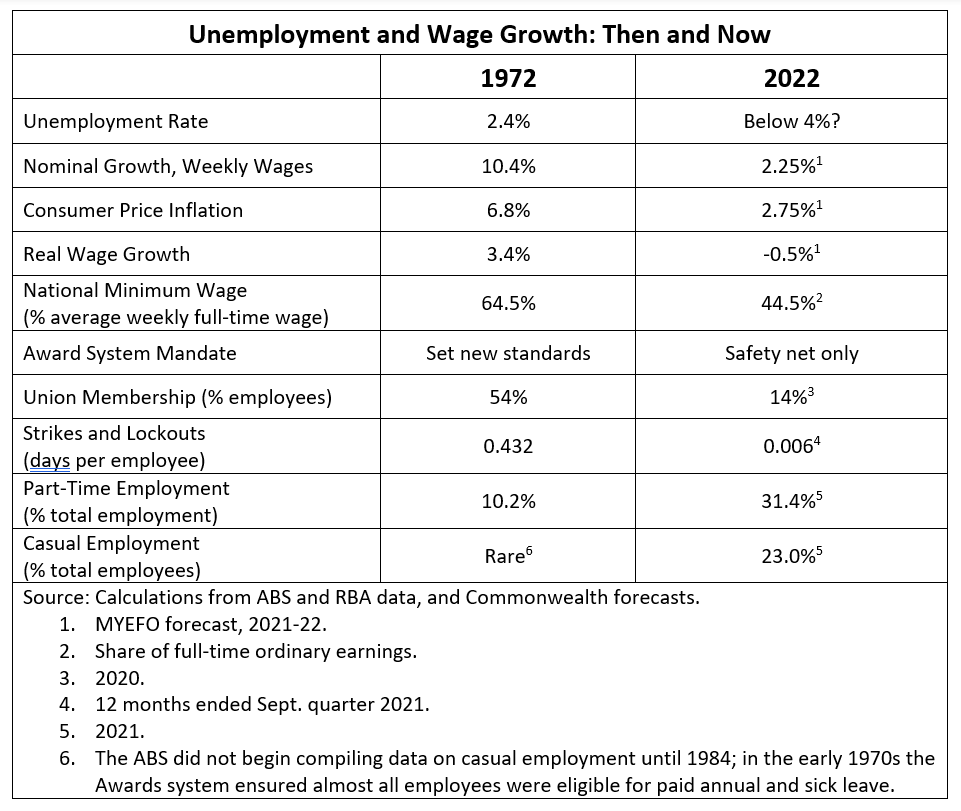Australia’s unemployment rate declined to 4.2% in December, and it could fall further (below 4%) in the coming year, barring further waves of COVID or other global shocks. This has some forecasters predicting a quick acceleration in wage growth — which has been stuck for almost a decade now at the slowest pace in Australia’s postwar history.
Will a low unemployment rate be sufficient to solve the crisis in Australian wages? In this article published in The Conversation, Centre for Future Work Director Jim Stanford argues that the historic restructuring of Australia’s labour market institutions over the last half-century (since the last time unemployment was below 4%) will continue to undermine wages, despite apparently tight labour markets.
This table compares regulatory and institutional parameters today, compared to fifty years ago. Across multiple dimensions (including the minimum wage, the Awards system, unions and collective bargaining, and job security), workers have lost the bargaining power they need to win higher wages. Hence labour costs remain suppressed, and business profits hit records, even as unemployment declines.
 Please see Jim’s full article, “Why there’s no magic jobless rate to increase Australians’ wages,” at The Conversation.
Please see Jim’s full article, “Why there’s no magic jobless rate to increase Australians’ wages,” at The Conversation.
You might also like
Paying for Collective Bargaining
Recent labour law reforms in Australia have focused attention on the crucial role played by collective bargaining in achieving higher wages, safer working conditions, and better job security.
“Right to Disconnect” Essential as Devices Intrude Into Workers’ Lives
Australia’s Parliament is set to pass a new set of reforms to the Fair Work Act and other labour laws, that would enshrine certain protections for workers against being contacted or ordered to perform work outside of normal working hours. This “Right to Disconnect” is an important step in limiting the steady encroachment of work
The key legislation changes that will help workers get a better deal
In recent years, workers have been held back from demanding better working conditions and pay by a lack of bargaining power.


